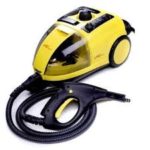Integrated Pest Management (IPM) is the most effective way to get rid of bed bugs. IPM also reduce the risk of pesticide exposure and protect the environment. Thorough cleaning, in the form of vacuuming the floor and furniture, is an essential step in bed bug control. Cleaning alone will not eliminate bed bugs but is necessary to crash high populations. Vacuuming will not easily remove all eggs or bed bugs those are hiding deep inside the cracks and crevices. Total elimination of bed bug needs combination of treatments.
Early detection and treatment are critical to successful bed bug control. According to a survey, the most commonly infested places are the mattress (98.2%), box spring (93.6%), as well as nearby carpets and baseboards (94.1%). In fact, bed bugs thrive in areas where there is an adequate supply of available hosts, and plenty of cracks and harborage.
Misuse of pesticide is a growing issue. Bed bugs are getting resistance to pesticide-making difficult to exterminate. We have developed following multi stage treatment techniques to get rid of this tiny bug. Result 100% guaranteed.
Non-chemical treatment – to eradicate the bugs from your environment.
- Vacuuming bed bug hiding spots.
- Hot & Dry Steaming to kill all stages of bed bug.
Chemical treatment – to break the lifecycle of bed bugs and keep them from returning.
- Insecticide sprays – will be used to spot treat bed bug harborage in cracks and crevices, behind baseboards, along ceiling-wall and floor-wall junctions, in closets, behind crown molding, and along window and door frames if necessary.
- Aerosol formulations – can be use in cracks and crevices, the under sides of drawers, drawer slides, nail holes, chipped paint and in the wood framing of the box springs if necessary.
The pest specialists at Trust Pest Control have a wide variety of tools and knowledge and are able to assess the situation to find the best bed bug solution for your home.
If you have any questions, do not hesitate to contact us for a free consultation.
Hot & Dry Steaming
Environmentally Friendly – Safe Procedure
In order to exterminate the bed bug infestation from your home we need appropriate best method. There are number of recommended quick fix. Dry & hot steam is one of the quick and effective method to exterminate bed bug from the infestation place. This kind of steaming does not damage any furniture, electronics or property, because no water residue or dampness is left behind on the treated surface from the steam. Special education and training is required to exterminate the bed bugs and it is not the job of every one.
While many bed bugs have developed resistance over the years to certain chemical treatments, hot and dry steam treatment remains the most power full, environmentally friendly and efficient way to kill all stages of bed bugs, including their eggs, which are protected from the effects of most pesticides. As eggs are protected-stage and can’t be killed by chemicals they start hatching within 10-14 days after a chemical treatment. Environmentally friendly -High heat steam instantly kills and destroys all life stages of bed bug.
To be effective, steam must reach near 100°C for a sustained period. Steamers work by delivering lethal temperatures where bed bugs are hiding. This technique is very effective when bed bugs are on the surface of items and can be effective up to 3/4″ into fabric surfaces.
Dry steam vapour penetrates into the smallest cracks, crevices; kills egg, nymphs and adult bed bugs instantly. In cracks and crevices, hot steam can kill bed bugs up to 2-3/8” into a gap. Hot vapour will flush bed bugs out of their hiding places to be killed or vacuumed.
Our team consist of entomologist who has vast knowledge of insect biology and chemistry. We have developed scientific approach to treat bed bug and our technique produces 100% success rate in bed bug extermination.


